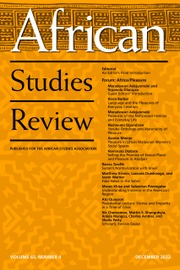Representing six language stocks, the African continent exhibits significant linguistic diversity; however, a few linguae francae are regionally dominant, and most African languages remain severely un(der)documented—not just in terms of basic grammatical descriptions and dictionaries, but also in terms of their wider sociolinguistic contexts. As a result, African Language Media attempts to fill this gap by recognizing the important role that autochthonous languages can and do fulfill in describing and constituting reality and the perception thereof. In the twenty-first century, this involves not only an acknowledgment of the intrinsic value of the languages under discussion, but also the recognition that technological advancement, coupled with serious geopolitical situations and climate-related issues, all impact the production and reception of discourses in these languages.
In pursuit of this task, this edited volume contains twenty-two chapters written by thirty-two authors. These chapters are organized into six sections and reflect a range of languages, such as Hausa, Shona, Ndebele, Xhosa, and Yoruba to a greater extent; Setswana, Tumbuka, Sango, Otjiherero, and others to a lesser extent. Thus, the regional focus areas include western Africa (Nigeria) and southeastern Africa (South Africa, Zimbabwe, and Malawi). Beyond the geographic and linguistic diversity offered, these chapters also engage multimodally with folk music, radio segments, literature, emojis, oral tradition, newspapers, comedic skits, interviews, focus groups, and podcasts. In many instances, the studies draw attention to more than one simultaneously.
Two recurring themes are consistently addressed throughout the chapters: (a) the inherent value and importance of African languages and (b) the usage of African languages to transmit, perpetuate, and dismantle discourses surrounding a number of demographic, sociocultural, political, and medical issues. The former is communicated through the very existence of this volume and through its focus on languages autochthonous to the continent. On the other hand, the latter is reinforced through a sequence of case studies situated in time, space, and place. For instance, Chapter Four examines the representation of women in Shona-language comedic skits shared on YouTube, covering a number of salient topics like infidelity and lust. Although the author assumes a feminist approach, the exemplars provided say almost as much about men as they do women, reflecting the potential of African media to “dispel racial, gender and class prejudices and stereotypes, allowing others to understand and appreciate the struggles and strength of Africans …” (36). This focus lends itself quite well to the notion that “indigenous languages should be viewed as forms of social practices that are linked to specific social contexts” (24).
Indeed, this objective is addressed comprehensively through consideration of issues of (g)local interest and importance, such as the availability of cinematic material and the domestication of content for local Nigerian audiences (Chapter Two); the unique adaptation of emojis to complement or even replace proverbs in Xhosa-language social media posts (Chapter Seven); the analysis of semi-structured interviews about Ndebele-language podcasts, revealing political anxiety, frustration, agency, and healthcare concerns (Chapter Nine); the efficacy of a decolonial approach applied to Shona-language journalism, demonstrating how the government is framed, who is blamed, whether (alternative) facts are foregrounded, and how COVID-19 impacted society (Chapter Eleven); and the importance of public protests in Nigeria, reflecting the role of burning, chanting, singing, dancing, and female nudity as forms of social protest (Chapter Twenty-one).
In particular, though, there were four chapters that demonstrated such depth of analysis that they are worth special recognition. Chapter Thirteen emphasizes that “[l]anguage becomes an obstacle when communication is not understood by the receiver” (166) before undertaking a thematic analysis of crime and safety reports from the South African Police Services (SAPS). In a similar vein, Chapter Fourteen examines the ways in which “community radio empowers local communities through its use of local languages” (182), reinforcing this point through a discussion of semi-structured interviews with staff at a Xhosa-language radio station and the results of almost four hundred questionnaires completed by listeners in the community. Chapter Sixteen also considers the impact of radio broadcasts, albeit at an Otjiherero-language station and by focusing on active and passive listeners with physical disabilities, remarking that a lack of participation perpetuates the invisibility of such people within the community. Finally, Chapter Twelve reports on questionnaires, focus groups, and interviews conducted in Malawi, the medium for which was Tumbuka. This chapter offered a rigorous treatment of awareness and knowledge of HIV/AIDS and COVID within the community.
Nevertheless, there were a few areas in which this volume was less successful than expected. Chapter Eight, for example, presents a German-language newspaper published in southern Denmark, offering a content-based analysis that is entirely irrelevant to the discussion at hand. While there is nothing inherently problematic about the inclusion of an Indo-European language here, the choice of one spoken on a different continent suggested a lack of attentiveness: Why not Spanish in Equatorial Guinea, German in Namibia, Afrikaans in South Africa, or Portuguese in Angola? Likewise, the languages presented are overwhelmingly Niger-Congo. In doing so, the remaining linguistic diversity found in Nilo-Saharan, Afro-Asiatic, Khoisan/Khoe-Kwadi, and, albeit to a much lesser extent, Austronesian are rendered, much like the listeners in Chapter Sixteen, invisible. Finally, the four chapters discussing musical and artistic traditions, excluding Chapter Eighteen, presented mostly subjective, nonreproducible accounts of the authors’ independent evaluations of such traditions, failing to deliver scholarship to effect change within the nations discussed, which appears tacitly to be the goal.


